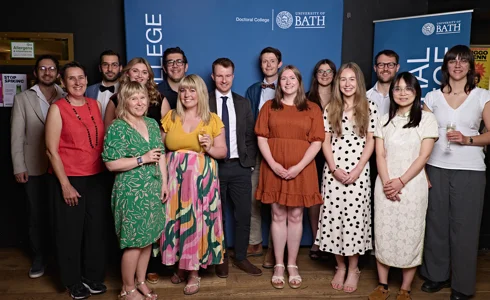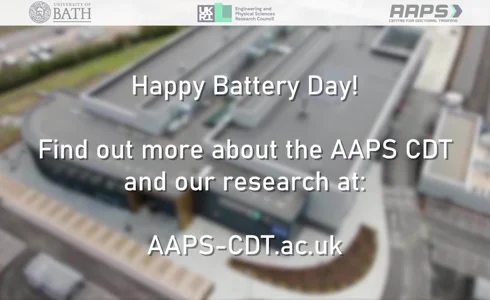
Paloma Rodriguez
Theme
Propulsion ElectrificationProject
Structural batteries mechanical resilience: Investigation and quantification of multiphysics coupling phenomena present in a novel structural battery architecture.Supervisor(s)
Dr Alex Lunt, Dr Andrew Rhead, Prof Chris BowenIndustry Partner
GKNBio
Paloma recently graduated from the University of Bath in 2020 with a first-class MEng (hons) in Mechanical Engineering. As part of her degree, she undertook a year-long placement at JCB, which consisted of three distinct four-month placements in different company departments. This allowed her to gain a broad insight into manufacturing, design techniques and processes required for large scale production. During her degree, she also became involved with Bath’s ICE Formula Student Team, Team Bath Racing, by helping with composite part manufacturing in her first year. In her third year, Paloma designed various chassis components, including roll-over and crash protection and chassis aerodynamic optimisation. In her final year, Paloma was elected Chassis lead for the 2020 season, with her final year project focusing on composite manufacture and optimisation of insert design and location strategy in composite sandwich panels.
Fun Facts
- My favourite crumpet topping is ham and cream cheese (with avocado and a poached egg a close second)
- I aspire to be outnumbered 100:1 by houseplants
- I have pretty much no sense of smell
- The only bones I have ever broken are toes and teeth
- I've taught my ex-racehorse Archie to smile, and its actually quite creepy
Structural batteries mechanical resilience: Investigation and quantification of multiphysics coupling phenomena present in a novel structural battery architecture.
Paloma's PhD will investigate the multifunctional performance of structural batteries. The PhD will focus on the use of synchrotron techniques to measure fibre scale mechanical properties of both anodes and cathodes during charge cycling, accumulation of microscale damage and understanding of ion intercalation patterns within the anode. Paloma will progress to understand similar properties under axial fatigue loading.
Structural batteries combine the load bearing and electrochemical storage capabilities of carbon fibres (CFs), offering significant opportunities for weight saving in aerospace and automotive applications. Recent research has showcased the potential of polyacrylonitrile (PAN) based CFs for structural battery anodes, and LiFePO4 coated carbon fibres as cathodes. Both anode and cathode fibres are embedded in a biphasic Structural Battery Electrolyte (SBE), composed of a liquid electrolyte phase for high ionic conductivity, and a porous stiff polymer matrix for mechanical performance. The resulting carbon fibre-polymer composite structure has the high specific strength/stiffness required for lightweight structural applications, and the high ionic conductivity required for battery functionality.
Optimisation and design of the multifunctionality of such systems requires an understanding of the coupling of physical phenomena, including thermal, electro-chemical and mechanical processes. In particular, quantifying the mechanical response at different charge states is crucial in the reliable use of these systems in structural applications. In order to achieve this, the project aims are twofold and iterative:
The first aim is the construction of a comprehensive multiphysics model on MSC Marc of a structural battery composite in order to predict the multifunctional performance of structural batteries in various load cases. MSC Marc is an advanced non-linear FEA solver capable of solving multiphysics problems. This will commence with the development of a multiphysics Representative Volume Element (RVE), to couple electrochemical, thermal and mechanical phenomena. Following this, the RVE overall properties may be used to define larger scale modelling. These simulations will supply an enhanced understanding and facilitate the improved design of structural batteries with the ultimate goal of unlocking their significant potential for reducing carbon emissions.
In order to define both the physical parameters and constants present in the multiphysics model, characterisation of material properties is required on a multiscale basis; quantification of individual structural battery components in isolation, and at the full composite level. In order to achieve this, the project will utilise a broad spectrum of experimental methods at different length scales; from the length scale of the fibre (10's of microns) using synchrotron techniques, to the microscale using nanoindentation and other methods.
Additionally, it is key to include assessment of individual component interactions at the multiphysics level. The scope of the project will focus on quantification of the property descriptor coefficients relating charge/electro-chemical load to mechanical response as required to embed this response into multiphysics simulations. In parallel, quantification of the property descriptor coefficients relating mechanical load to electro-chemical response will thereby fully encapsulate the structural battery system.




